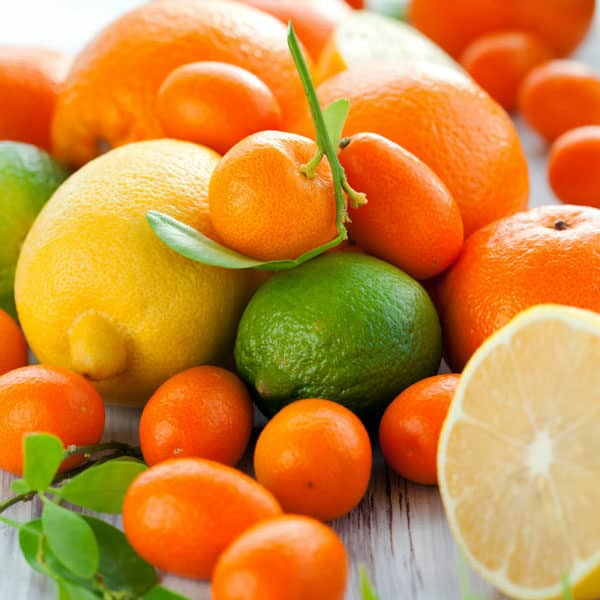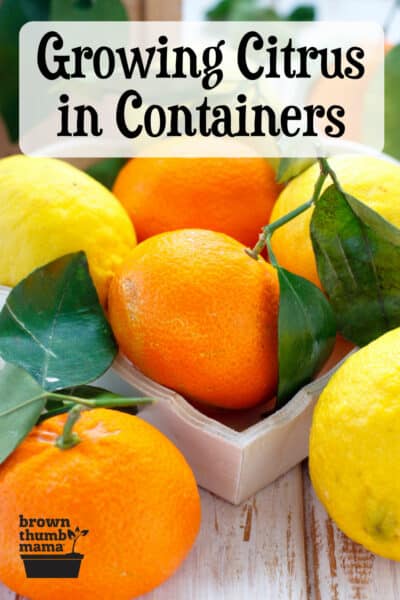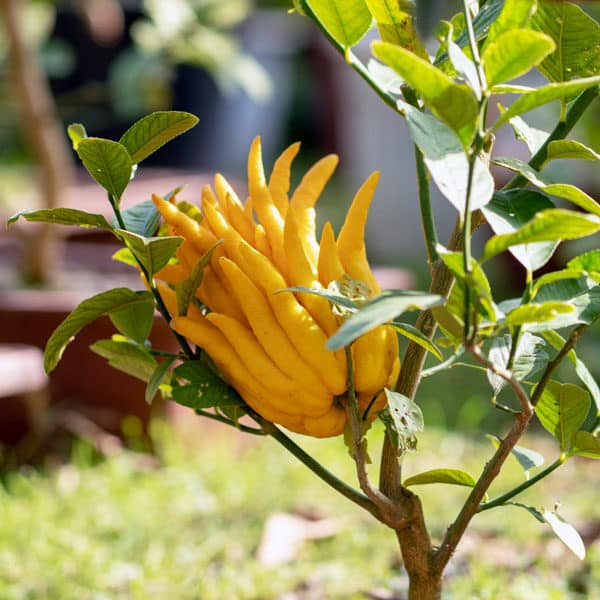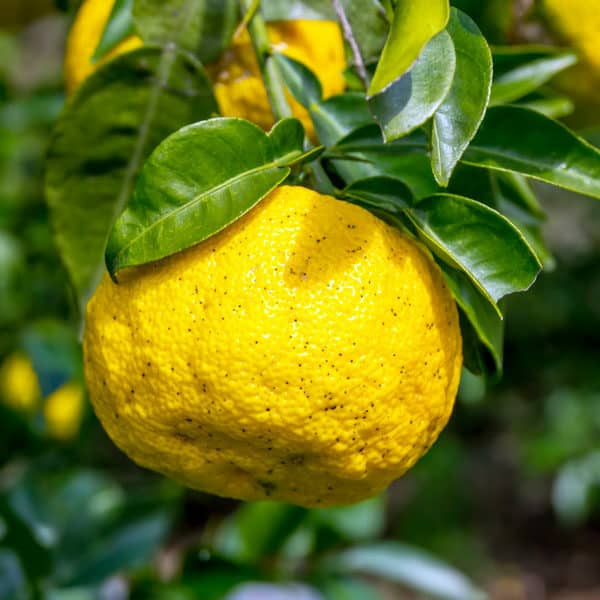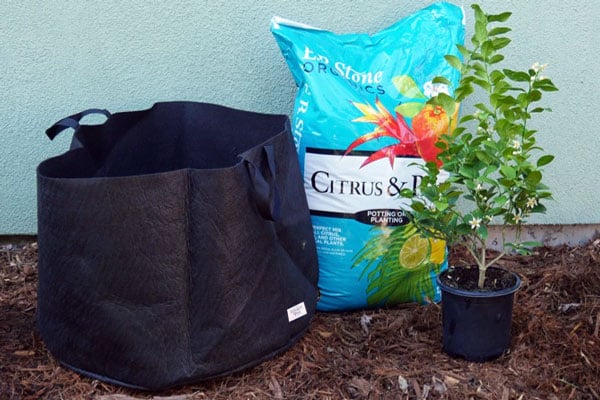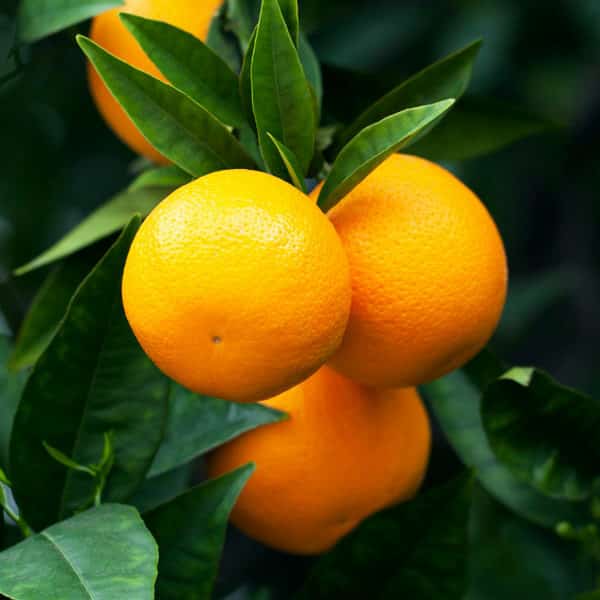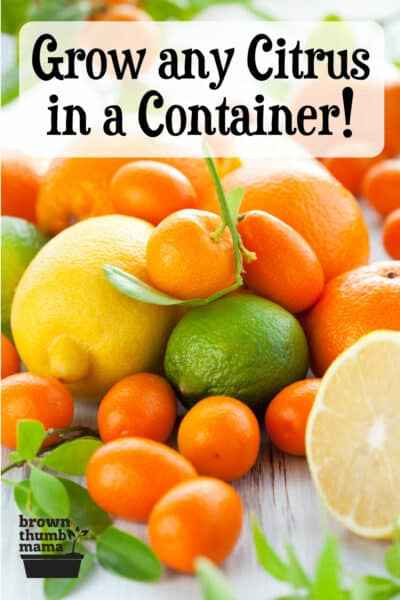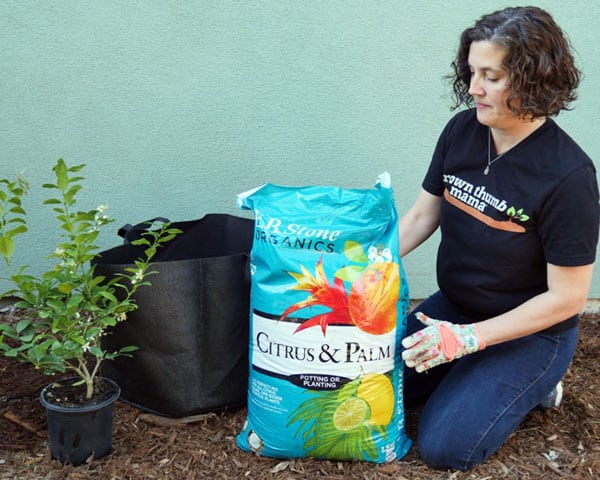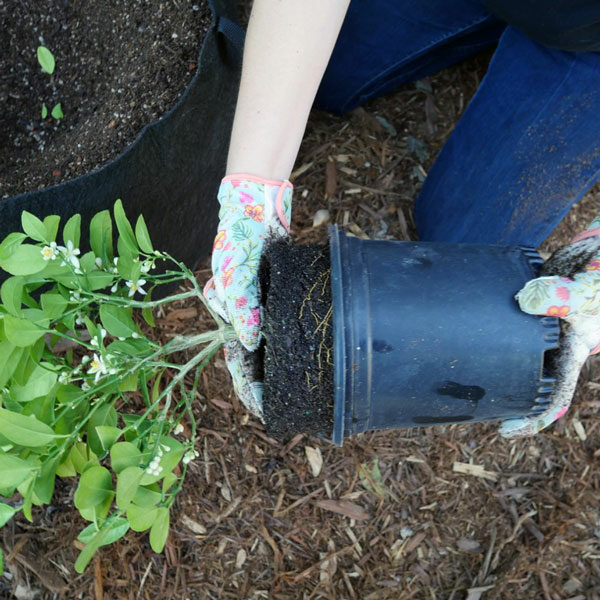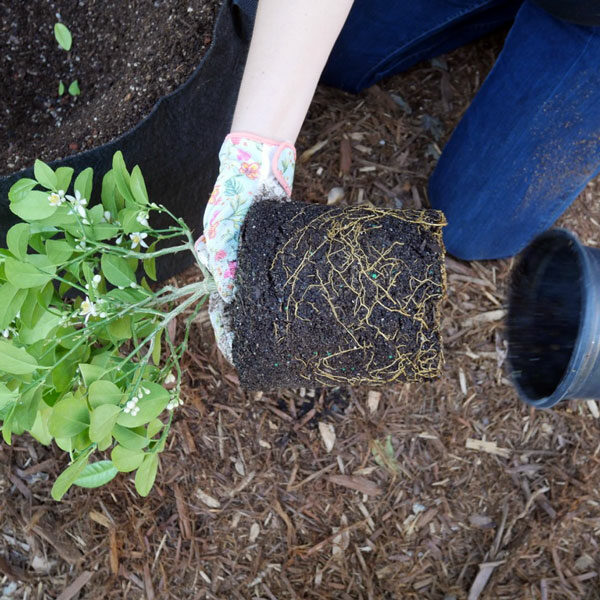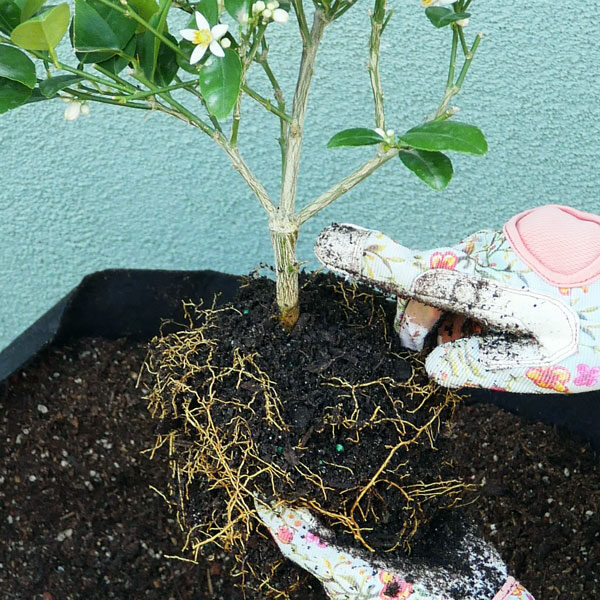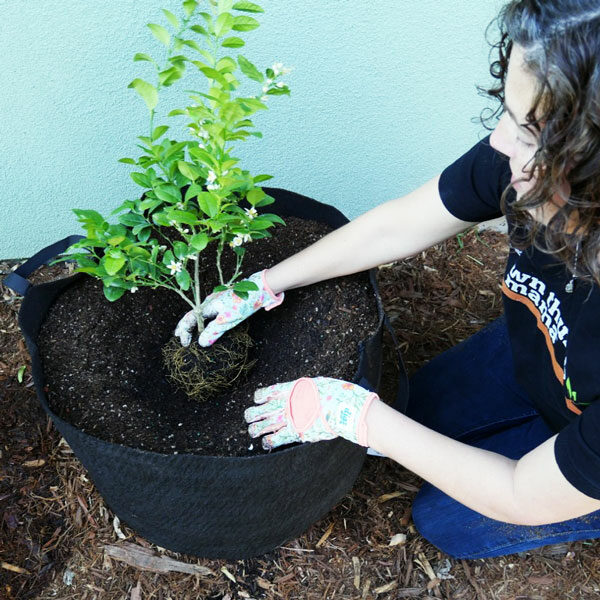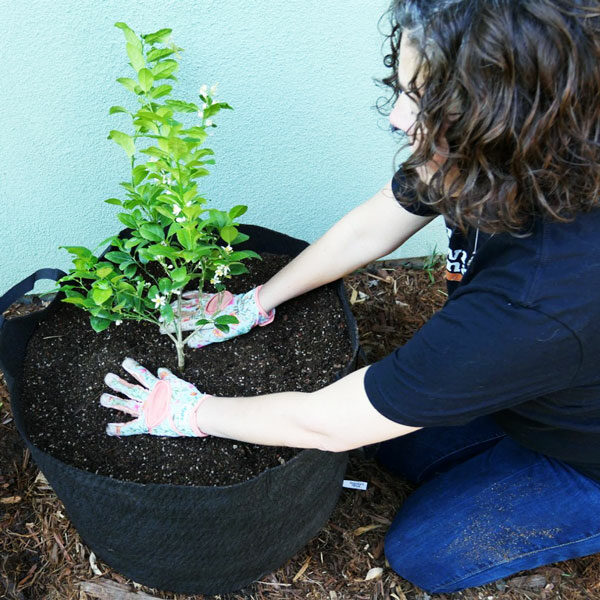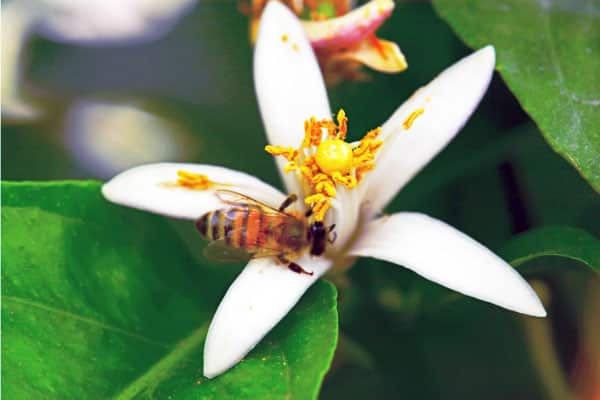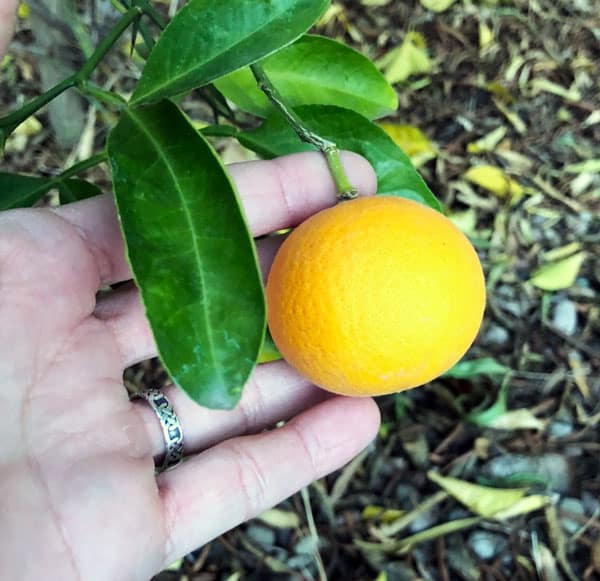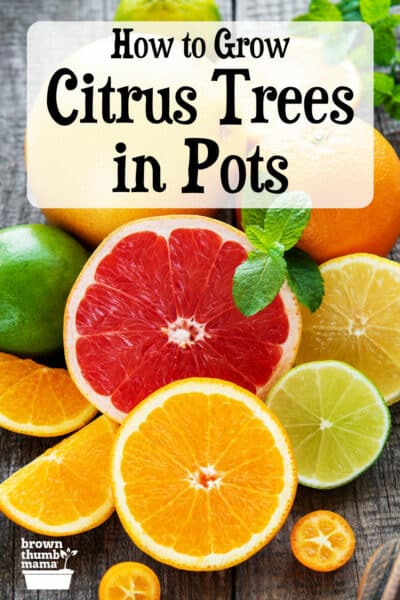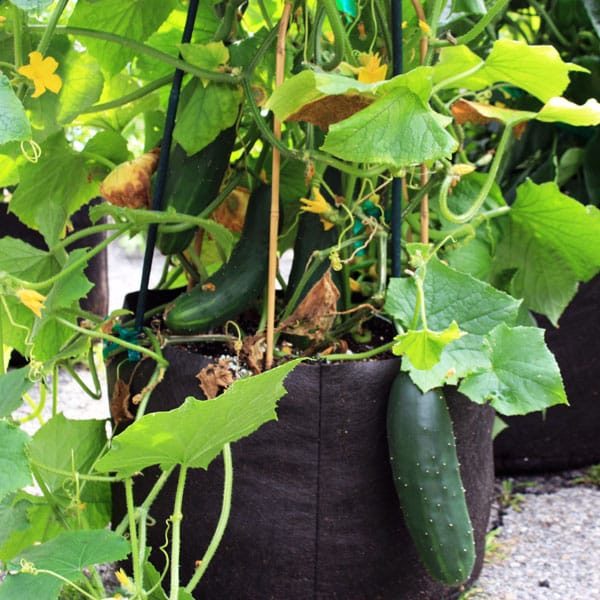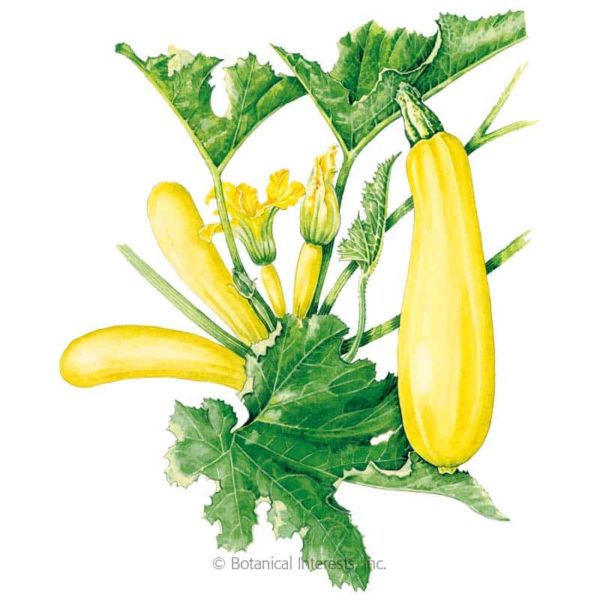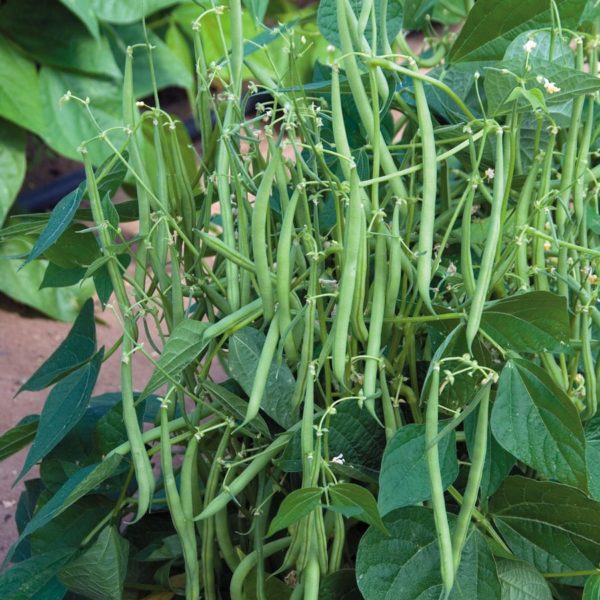This post may include affiliate links.
If you make a purchase, I'll earn a small fee at no extra cost to you.
Citrus trees thrive in pots or containers! Here’s everything you need to know about planting and growing lemon, lime, or orange trees in containers.
Thank you to Smart Pot® for sponsoring this article.
It’s planting time, and I’m excited to add some happy little citrus trees to our backyard orchard. Our lemon tree is doing well in the ground next to the pool, but I’m planting my new lime and mandarin trees in containers.
Once they’re in pots, I can move them around the yard easily and bring them inside when freezing temperatures hit. My last mandarin tree and lime tree didn’t survive the winter and I want to be sure these guys make it!
Best Varieties for Container Planting
Just about any citrus tree can be grown in containers. When choosing your tree at the nursery, select dwarf or semi-dwarf varieties. This means that your tree will grow to 4-5 feet tall, which is a manageable size for a large pot.
Standard citrus trees planted in the ground can grow up to 25 feet tall, which is way too big for container planting.
Here’s a sampling of the citrus you can plant in containers:
- Blood oranges
- Buddha’s Hand (above)
- Clementine mandarins
- Finger lime
- Grapefruit
- Kumquat
- Lemons
- Limes
- Navel oranges
- Pomelo/pummelo
- Satsuma mandarins
- Seville oranges
- Tangelo
- Valencia oranges
- Yuzu (below)
Best Containers for Citrus Trees
The best containers for your citrus trees are Smart Pots. These durable fabric planters are weather-resistant, UV resistant, and easy to use. They’re also great for growing blueberries and potatoes. Smart Pots are made in the USA and are BPA and lead free, which is important when you’re growing food.
Smart Pots are great for my little lime tree and mandarin tree because they encourage strong root growth. Have you ever taken a plant out of its pot and found the roots wrapped around and around inside the pot? This happens because the roots aren’t branching properly.
Because Smart Pots are porous, the roots don’t wrap around–they branch out. This is called air pruning, which is a natural and healthy way to promote root growth (and therefore more nutrient absorption). Smart Pots have been studied and proven to improve plant growth.
While citrus trees are sold in small pots at the nursery, you want to get a container that allows for their full growth. I planted my lime tree in a 25-gallon Smart Pot, and my mandarin orange in a 30-gallon Smart Pot. The mandarin is older and larger, and I wanted to be sure its roots had plenty of room.
Sun, Water, Soil for Container Citrus
Sun
Citrus trees like lots of sun! They’ll do best with at least 8 hours of direct sun. When you plant them in containers, you can move them to different parts of your yard to see how they like it.
Water
Consistent watering is important for container citrus. When you’re using quality planting mix, the soil will be loose and still retain water. Deep watering once or twice a week is better than a few minutes with the sprinkler–but if the leaves are wilting, water right away.
Since Smart Pots are made of durable fabric, their excellent drainage gives them a big advantage over plastic or terra cotta pots. Smart Pots also allow salts and chemicals from over-fertilizing to wash away, instead of being stuck in the bottom of the pot and burning the roots of your plant.
Soil
Please don’t scoop up a bunch of dirt from your yard for your happy little trees. Garden soil is too dense and could have fungus, microbes, seeds, bugs, or other critters that will damage your plants.
You want your citrus trees to do well, so I recommend EB Stone Citrus & Palm planting mix. It contains aged fir bark, lava rock, sand, volcanic pumice, aged redwood, and peat moss. This mix was created to provide the aeration and water retention that citrus trees need.
Planting in Containers
Make sure you have everything you need before you transfer your tree into its pot. Having to run to the garden center for more supplies will make you a grumpy gardener, for sure.
A 25-gallon Smart Pot will need 2 bags of Citrus & Palm mix. Pour the soil in and then make a hole in the middle that’s about as deep as the container from the nursery.
Gently take the tree out of the nursery pot. Don’t pull it by the trunk, tip the pot sideways and ease the tree and root ball out.
Next take a look at the roots. Are they wound around and around like this (or worse)? Your tree is rootbound, which is what happens in plastic or clay pots.
Your tree won’t have this problem in a Smart Pot because of air pruning. Gently tease the roots apart so they spread out in their new container.
Find the graft line on the trunk. This is the spot where the citrus is grafted, or naturally bonded, on to the roots of another tree. The rootstock is what makes the tree a dwarf or semi-dwarf.
If there are any sprouts or limbs growing below the graft line, prune them off. It’s pretty unusual to have suckers (rootstock growth) from trees that just came from the nursery, but you might see some later. Suckers always need to be removed, or they’ll take over the entire tree.
Ease the roots into the soil so the upper roots are just below the soil line. You might need to add soil into the hole, and that’s OK. Better to have the tree up a little too high than to have it sunk down in the soil so the trunk is always wet.
After your tree is all tucked into its new home, pat the soil a bit so there are no air pockets. Water your happy little tree thoroughly to reduce transplant shock. I like to use my Dramm Rain Wand to give it a gentle shower.
One week later, apply EB Stone Citrus & Fruit Tree Food. Put a note on your calendar to feed your tree every other month (check package for instructions).
If you choose to add mulch to your container, be sure that it is not piled up around the trunk of the tree.
Pollination & Harvesting
Bees and other pollinators will love your citrus trees. Most citrus trees are self-fertile, so you don’t need to plant multiple trees to get a harvest.
It can take from 2-5 years for your citrus trees to bear a large, consistent crop. The first year after you plant your tree, pinch off any fruits when they first appear. This allows the tree to focus on growing strong roots and branches, which will provide you with more fruit in future years.
Most citrus trees bloom and set fruit in the spring. Some of the tiny fruits will fall off the tree, and that’s OK. If there are too many fruits on a branch, the branch could break.
The fruit grows during the summer and is ready to harvest in the winter. The best way to see if the fruit is ready is by tasting it–the color of the rind is not a perfect way to determine ripeness, and citrus will not ripen off the tree.
Because citrus can hold on the tree for some time, the best storage method is to leave it on the tree until you’re ready to enjoy it.
When you’re ready to harvest, use pruners (I like the Felco F5, which cuts through everything like butter) to snip off the stem just above the fruit. If you pull and twist, you could damage the tree tear a hole in the rind, which encourages spoilage.
Need some ideas for your citrus harvest? Here are my favorites:
Make Citrus Vinegar for Natural Cleaning
Panda Express Copycat Orange Chicken
Have more citrus than you can use or eat? Share your bounty with your local food bank! Food banks don’t often get donations of fruits and vegetables, and their clients will welcome the fresh food. You can find your local food bank at Feeding America.org.

